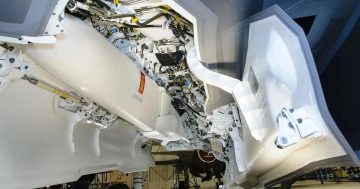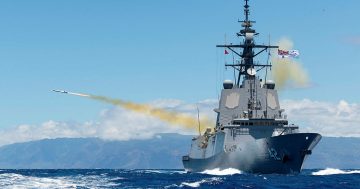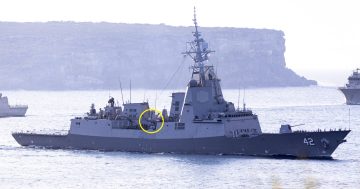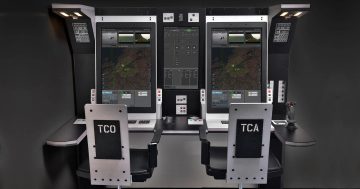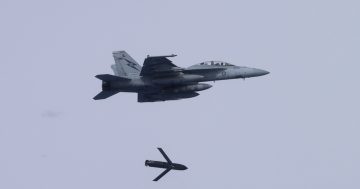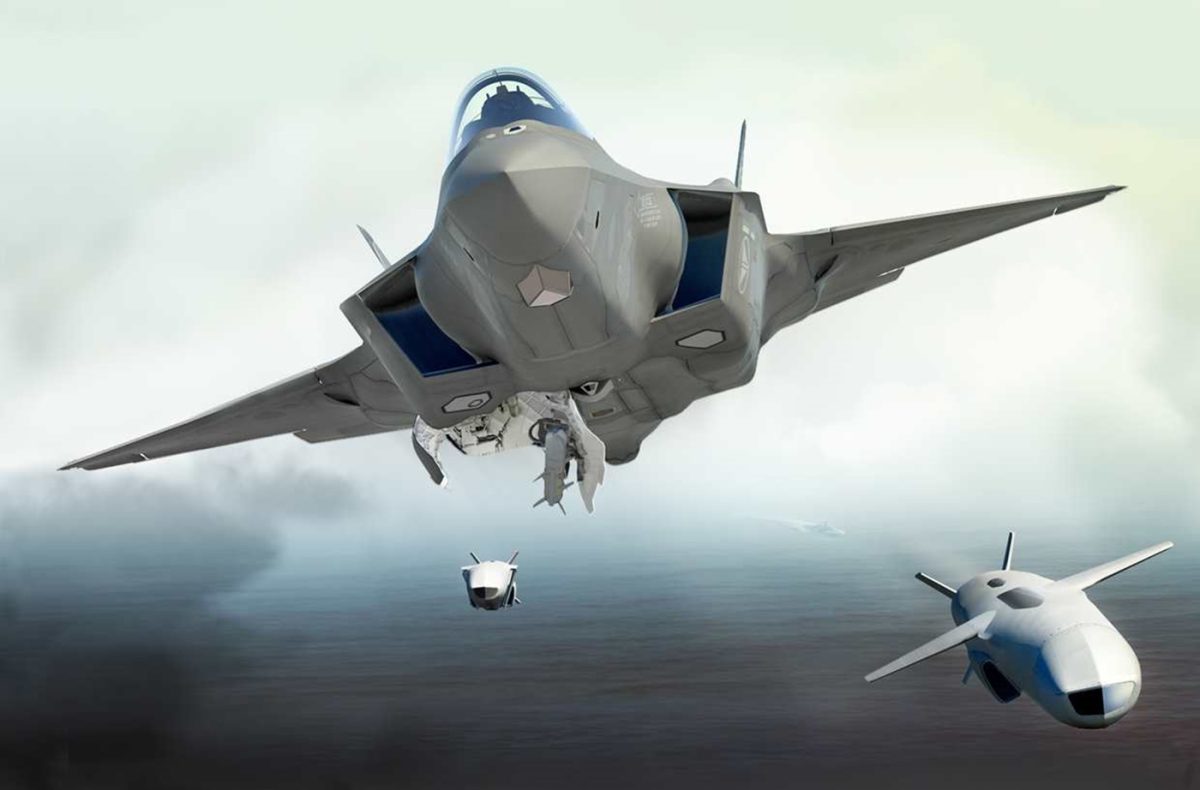
F-35A firing JSMs. Photo: Kongsberg Defence Australia.
Advanced anti-ship missiles will be manufactured at a new facility in Australia under a plan announced this morning (22 August) by the Federal Government.
The $850 million partnership between the Commonwealth and Kongsberg Defence Australia will see a new manufacturing facility built at the Newcastle Airport precinct adjacent to RAAF Base Williamtown, and Kongsberg Naval Strike Missiles (NSM) and Joint Strike Missiles (JSM) produced at the facility.
The new plant will be just the second in the world where the missiles will be manufactured, after the original site located in Kongsberg in Norway. The government estimates that as many as 500 jobs will be created during the facility’s construction and more than 100 jobs once production of the missiles commences.
The NSM is a sea-skimming anti-ship missile that has just entered service with the Royal Australian Navy to replace the RGM-84 Harpoon. While they are primarily designed to attack naval targets, both the NSM and JSM can also be used against land-based targets.
The Hobart class destroyer HMAS Sydney conducted the first successful test firing of the NSM from an Australian vessel at the Rim of the Pacific (RIMPAC) naval exercise in Hawaii last month, and all Hobart, Anzac and the forthcoming Hunter class warships are scheduled to be equipped with the NSM.
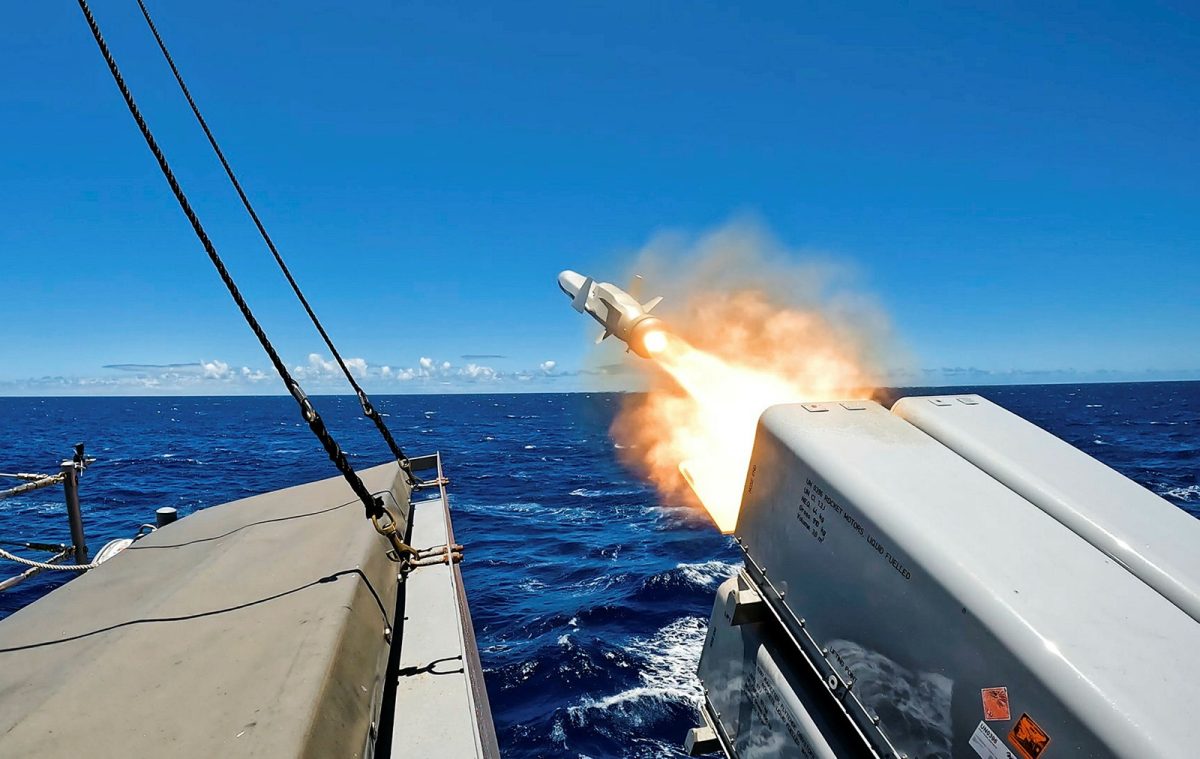
An NSM being fired from HMAS Sydney during July’s RIMPAC exercise. Photo: ADF.
The JSM is the air-launched version of the NSM. It has been specifically designed to be carried inside the internal weapons bay of the F-35A Lightning combat aircraft, of which Australia currently operates 63 of a planned 72 aircraft.
While not specifically stated, the fact that it says JSMs will be manufactured for the RAAF indicates a decision has been taken to acquire that missile for Defence’s Project AIR 3023 Phase 2 Enhanced Air-launched maritime strike requirement.
The JSM’s estimated range of about 300 km and its typical target set will see it sit neatly below the larger 700 km+ range AGM-158C Long-Range Anti-Ship Missile (LRASM), also on order for the RAAF, primarily for its F/A-18F Super Hornet strike aircraft and P-8A Poseidon maritime response aircraft.
Going forward, it may also be possible to fit the JSM to the RAAF’s P-8A and the Navy’s MH-60R Romeo Seahawk naval combat helicopter.
The JSM is also operated by the Royal Norwegian Air Force, the Japanese Air Self-Defense Force, and the US Air Force, all from F-35A aircraft.

The JSM can be employed from the F-35A’s internal weapons bay and can also be carried on wing pylons. Photo: Kongsberg Defence Australia.
While it is unlikely a single NSM or JSM will sink a major surface combatant, these missiles can home in on a particular part of a ship such as the bridge, radar mast or weapons battery, effectively resulting in a mission kill of that vessel.
Construction of the Newcastle factory is expected to start later this year. It represents the first major facility to come in under the bilateral Guided Weapons and Explosive Ordnance (GWEO) Enterprise, and current GWEO partners Lockheed Martin Australia and Raytheon Australia will be joined by Kongsberg Australia.
Announced by the Morrison government in March 2021, GWEO is seeking to build Australia’s self-reliance and enhance the supply-chain resilience of guided weapons and explosive ordnance. This will be achieved by developing capabilities to conduct manufacturing, research and development, education and training, test and evaluation, maintenance and repair, storage and distribution, and disposal of precision weapons in-country.
One of the first GWEO announcements came in January 2024 when it was reported Lockheed Martin Australia would assemble GLMRS missiles for the Army’s new HIMARS guided missile system at Orchard Hills in western Sydney from 2025.
Minister for Defence Industry and Capability Delivery Pat Conroy said the announcement is about investing in an advanced, high-tech manufacturing industry and developing a sovereign defence industrial base in areas that have been identified as strategic priorities.
“We cannot deliver the generational uplift in capability outlined in the National Defence Strategy without our industry partners, and we look forward to working with Kongsberg Defence Australia as a GWEO Strategic Partner,” he said.
Original Article published by Andrew McLaughlin on Riotact.


